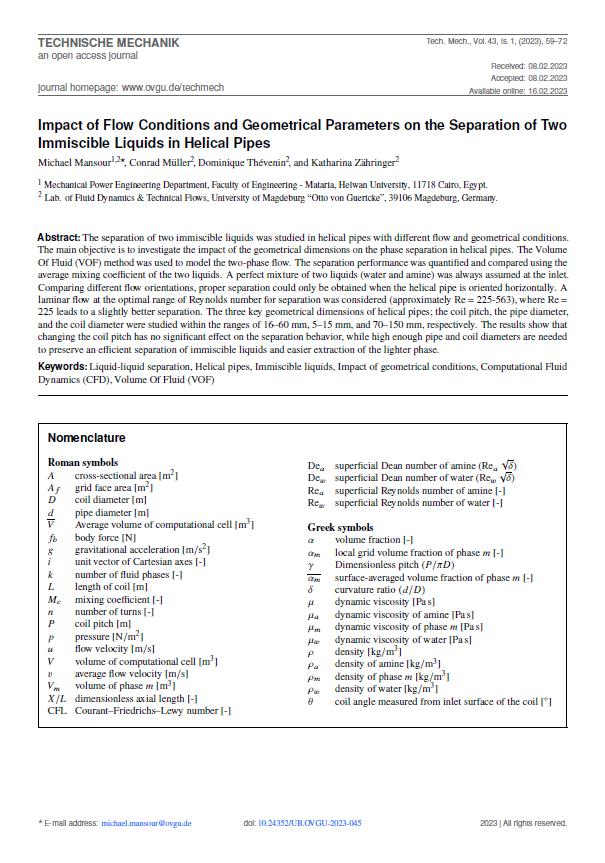Impact of Flow Conditions and Geometrical Parameters on the Separation of Two Immiscible Liquids in Helical Pipes
DOI:
https://doi.org/10.24352/UB.OVGU-2023-045Keywords:
Liquid-liquid separation, Helical pipes, Immiscible liquids, Impact of geometrical conditions, Computational Fluid Dynamics (CFD), Volume Of Fluid (VOF)Abstract
The separation of two immiscible liquids was studied in helical pipes with different flow and geometrical conditions. The main objective is to investigate the impact of the geometrical dimensions on the phase separation in helical pipes. The Volume Of Fluid (VOF) method was used to model the two-phase flow. The separation performance was quantified and compared using the average mixing coefficient of the two liquids. A perfect mixture of two liquids (water and amine) was always assumed at the inlet. Comparing different flow orientations, proper separation could only be obtained when the helical pipe is oriented horizontally. A laminar flow at the optimal range of Reynolds number for separation was considered (approximately Re = 225-563), where Re = 225 leads to a slightly better separation. The three key geometrical dimensions of helical pipes; the coil pitch, the pipe diameter, and the coil diameter were studied within the ranges of 16-60 mm, 5-15 mm, and 70-150 mm, respectively. The results show that changing the coil pitch has no significant effect on the separation behavior, while high enough pipe and coil diameters are needed to preserve an efficient separation of immiscible liquids and easier extraction of the lighter phase.

Downloads
Published
How to Cite
Issue
Section
License
Copyright (c) 2023 Michael Mansour, Conrad Müller, Dominique Thévenin, Katharina Zähringer

This work is licensed under a Creative Commons Attribution-ShareAlike 4.0 International License.




